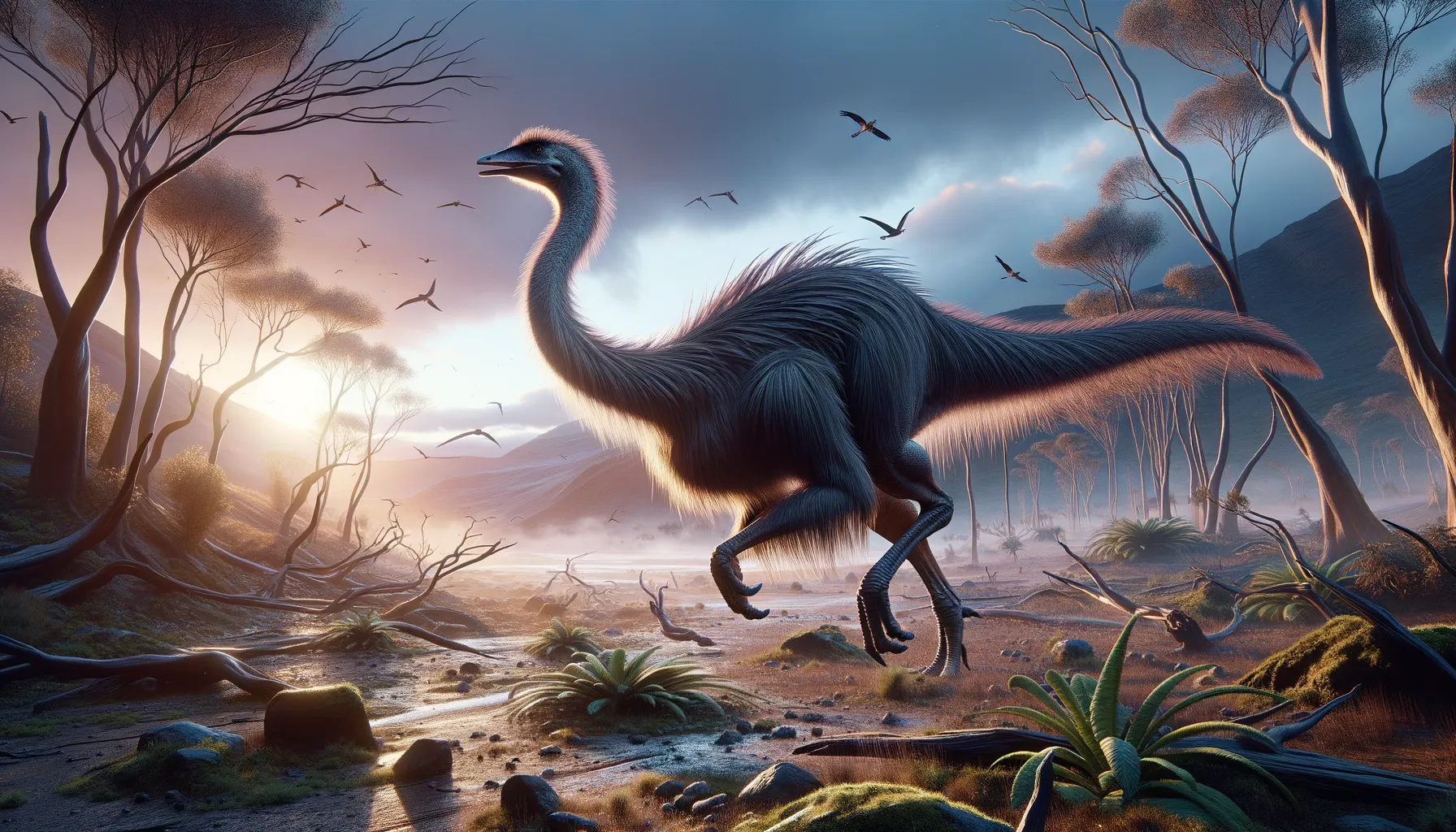
Ornithomimoides
The ostrich mimic of ancient India.
Period
Cretaceous
Length
Approximately 4 meters long.
Height
About 2 meters at the hip.
Weight
Approximately 100 to 200 kilograms.
Ornithomimoides was a dinosaur that resembled modern ostriches. Known for its slender build and long legs, it was well-adapted for quick sprints across its habitat. While not as famous as some of its relatives, this dinosaur provides a fascinating glimpse into the diverse ecosystems of ancient India during the Cretaceous period.
Diet
Ornithomimoides was likely an omnivore, feeding on small animals and plants. Its diet may have varied with availability, allowing it to exploit different food sources efficiently.
Hunting
It likely hunted small animals using its speed to chase down prey. Scavenge feeding might also have been a part of its behavior, taking advantage of available carrion.
Environmental challenges
Ornithomimoides faced challenges such as fluctuating temperatures and changing vegetation patterns. Competition for food with other herbivores and omnivores required adaptability. Periodic droughts or floods could also have impacted its survival.
Speed
Likely fast-moving, agile runner.
Lifespan
Estimated to be around 20 to 30 years.
First discovery
First identified in India in the early 20th century.
Fun Facts
- Ornithomimoides was a theropod dinosaur that lived around 70 million years ago during the Late Cretaceous period.
- The name Ornithomimoides means 'bird mimic,' as it resembled modern birds with its long legs and likely fast running abilities.
- This dinosaur is thought to have had a small head and toothless beak, suggesting it was possibly an omnivore, eating both plants and small animals.
- Fossils of Ornithomimoides have been found in present-day India, providing clues about how diverse the dinosaur life was in that region.
- Ornithomimoides is part of a group of dinosaurs known as ornithomimids, often likened to the ostriches of the dinosaur world.
- Despite their bird-like appearance, there's no evidence to suggest Ornithomimoides could fly; they likely used their speed for evading predators.
- The study of Ornithomimoides and similar dinosaurs helps scientists understand the evolutionary processes that led to the development of modern birds.
Growth and Development
Young Ornithomimoides likely grew rapidly to evade predators. Its development involved changes in limb length to support fast running. Adolescence would have been a key time for learning survival tactics.
Habitat
Lived in open plains and forested regions of ancient India. These environments provided diverse resources such as plants and small animals. Seasonal variations would have affected availability of food and water.
Interaction with other species
Shared its habitat with many herbivorous and carnivorous dinosaurs. Likely competed with other omnivores for resources. Potential prey for larger predators, necessitating its speed and vigilance.
Natural lifespan
Natural lifespan could reach up to 30 years, assuming survival past juvenile stages.
Reproduction
Likely laid eggs in nests on the ground, similar to birds. Parental care might have included guarding and possibly feeding hatchlings. Seasonal mating could align with favorable conditions.
Social behaviour
Might have exhibited some social behavior, interacting in small groups. Group dynamics could provide advantages such as protection from predators. Social learning might contribute to survival strategies.
Fossil locations
Fossils primarily found in regions of modern-day India. These discoveries have expanded knowledge of regional prehistoric ecosystems. Fossils help reconstruct the evolutionary history of ornithomimosaurids.
